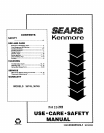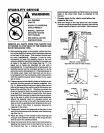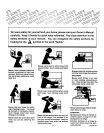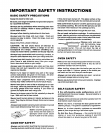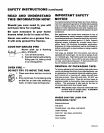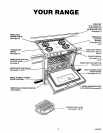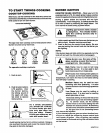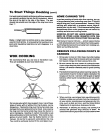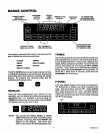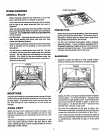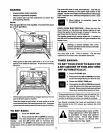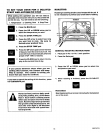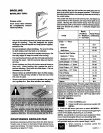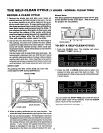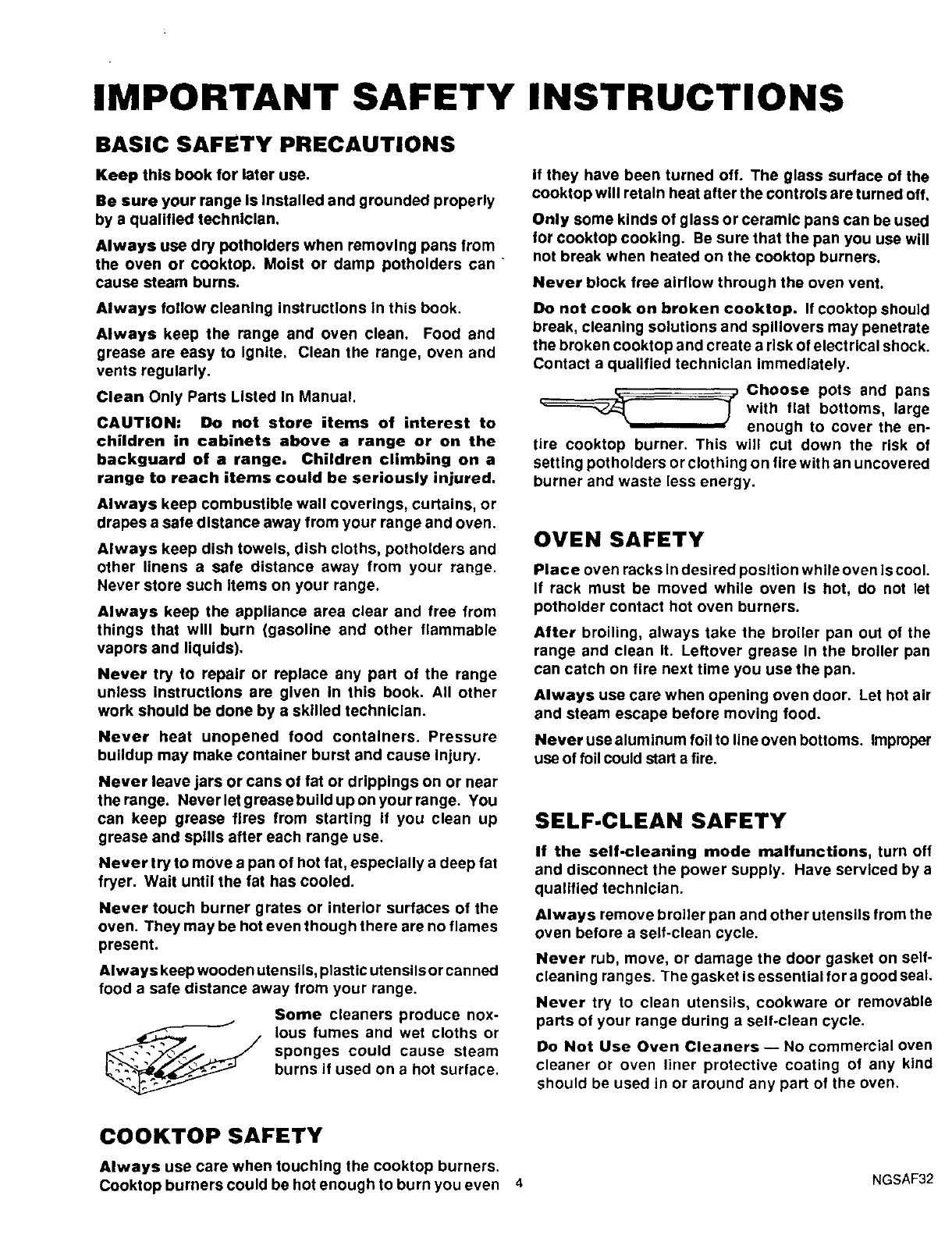
IMPORTANT SAFETY INSTRUCTIONS
BASIC SAFETY PRECAUTIONS
Keep this book for later use.
Be sure your range Is Installed and grounded properly
by a qualified technician.
Always use dry potholders when removing pans from
the oven or cooktop. Moist or damp potholders can
cause steam burns.
Always follow cleaning instructions In this book.
Always keep the range and oven clean. Food and
grease are easy to ignite. Clean the range, oven and
vents regularly.
Clean Only Parts Listed In Manual,
CAUTION: Do not store items of interest to
children in cabinets above a range or on the
backguard of a range. Children climbing on a
range to reach items could be seriously injured.
Always keep combustible wall coverings, curtains, or
drapes a safe distance away from your range and oven.
Always keep dish towels, dish cloths, potholders and
other linens a safe distance away from your range.
Never store such items on your range.
Always keep the appliance area clear and free from
things that will burn (gasoline and other flammable
vapors and liquids).
Never try to repair or replace any part of the range
unless instructions are given In this book. All other
work should be done by a skilled technician.
Never heat unopened food containers. Pressure
buildup may make container burst and cause injury.
Never leave jars or cans of fat or drippings on or near
therange. Neverletgreasebuilduponyourrange. You
can keep grease fires from starting if you clean up
grease and spills after each range use.
Never try to move a pan of hot fat, especially a deep fat
fryer. Wait until the fat has cooled.
Never touch burner grates or interior surfaces of the
oven. They may be hot even though there are no flames
present.
Always keep wooden utensils, plastic utensils or can ned
food a safe distance away from your range.
Some cleaners produce nox-
ious fumes and wet cloths or
sponges could cause steam
burns if used on a hot surface.
If they have been turned off. The glass surface of the
cooktop will retain heat after the controls are turned off.
Only some kinds of glass or ceramic pans can be used
for cooktop cooking. Be sure that the pan you use will
not break when heated on the cooktop burners.
Never block free airflow through the oven vent.
Do not cook on broken cooktop. If cooktop should
break, cleaning solutions and spillovers may penetrate
the broken cooktop and create a risk of electrical shock.
Contact a qualified technician immediately.
_=:=:=_____ Choose pots and pans
with flat bottoms, large
enough to cover the en-
tire cooktop burner. This will cut down the risk of
setting pot holders or clothing on fire with an uncovered
burner and waste less energy.
OVEN SAFETY
Place oven racks in desired position while oven is cool.
If rack must be moved while oven Is hot, do not let
potholder contact hot oven burners.
After broiling, always take the broiler pan out of the
range and clean It. Leftover grease in the broiler pan
can catch on fire next time you use the pan.
Always use care when opening oven door. Let hot air
and steam escape before moving food.
Never use aluminum foil to line oven bottoms. Improper
use of foil could starta fire.
SELF-CLEAN SAFETY
If the self-cleaning mode malfunctions, turn off
and disconnect the power supply. Have serviced by a
qualified technician.
Always remove broiler pan and other utensils from the
oven before a self-clean cycle.
Never rub, move, or damage the door gasket on self-
cleaning ranges. The gasket is essential for a good seal.
Never try to clean utensils, cookware or removable
parts of your range during a self-clean cycle.
Do Not Use Oven Cleaners -- No commercial oven
cleaner or oven liner protective coating of any kind
should be used in or around any part of the oven.
COOKTOP SAFETY
Always use care when touching the cooktop burners.
Cooktop burners could be hot enough to burn you even 4
NGSAF32



